On May 9, 2016, President Obama signed the National Bison Legacy Act into law, making the American bison the national mammal of the United States. However, very few Americans know anything about this majestic animal. This is why we have created a list of 23 interesting and weird facts about bison.
1. In prehistoric times, millions of bison roamed North America. They could be found in the forests of Alaska and the grasslands of Mexico to Nevada’s Great Basin and the eastern Appalachian Mountains.
2. By the late 1800s, only a few hundred bison were left in the United States due to European settlers pushing west, reducing the animal’s natural habitat and hunting the bison into extinction.
3. Due to hard work from private individuals that worked with local tribes and the states Interior Department, the bison would be extinct today.
4. Bison are the largest mammal living in North America.
5. Male bison, who are called “bulls,” are known to grow up to 2,000 pounds and stand 6 feet tall, when measured at the shoulder.
6. Female bison, who are called “cows,” grow up to 1,000 pounds and reach heights of 5 feet, when measured at the shoulder.
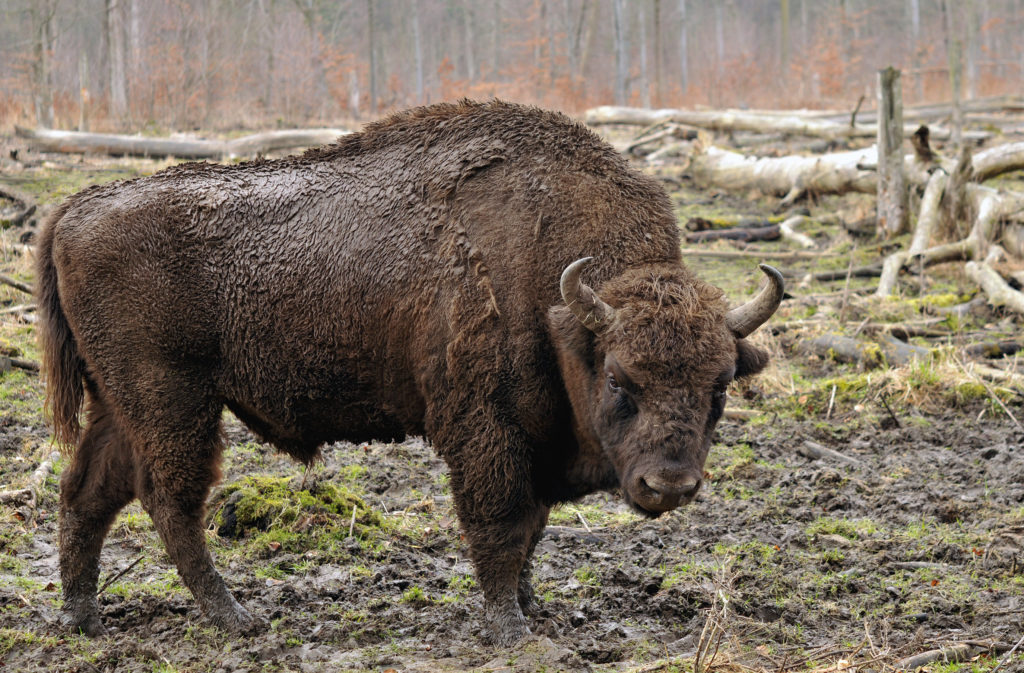
7. Young bison offspring, called “calves,” weigh between 30 to 70 pounds at birth.
8. Public lands that are managed by the U.S. Interior Department support 17 bison herds, which is approximately 10,000 bison.
9. Yellowstone National Park is the only place in the U.S. where bison have continuously lived since prehistoric times.
10. Baby bison are also called “red dog.” This is because they’re born from late March through May and are orange and red in color. After a few months, their hair changes to dark brown and they get the characteristic shoulder hump and horns.
11. Bison have been integral to the life of Native Americans. They have provided them with food, clothing, fuel, tools, shelter and are a big part of their spirituality.
12. You can tell a bison’s mood by the way it moves its tail. If the tail hangs down, the bison is usually calm. If the tail is standing straight, it’s most likely ready to charge.
13. Bison are extremely agile. They can run up to 35 miles per hour, they can spin around quickly, jump high fences and are very strong swimmers.
14. Bison mostly eat grasses, weeds and leafy plants. They spend 9 to 11 hours per day looking for food.
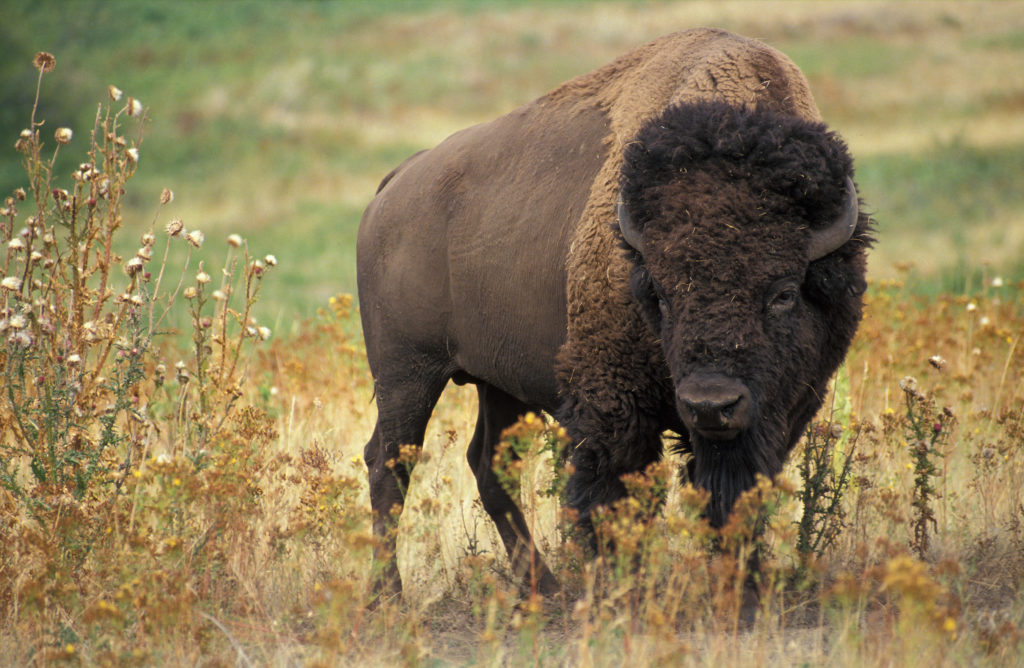
15. During the winter, bison’s swing their heads from side to side to clear snow and looking for patches of grass to forage.
16. In 1883, Teddy Roosevelt went to the Dakota Territory to hunt bison. After spending a few years there, he came back to New York with a new found love for the animal. He paved the way for the conservation movement, and in 1905, formed the American Bison Society with William Hornaday to try and save the quickly disappearing bison.
17. The average bison lives between 10 to 20 years, but some live to be older than that.
18. Female bison begin to breed at the age of 2 and have only 1 offspring at a time.
19. Male bison have their prime breeding age from 6 to 10 years old.
20. Bison roll in the dirt to try and deter flies and help shed fur. This is called “wallowing” and during mating season, male bison are known to wallow in order to leave behind their scent and display their strength to the females.
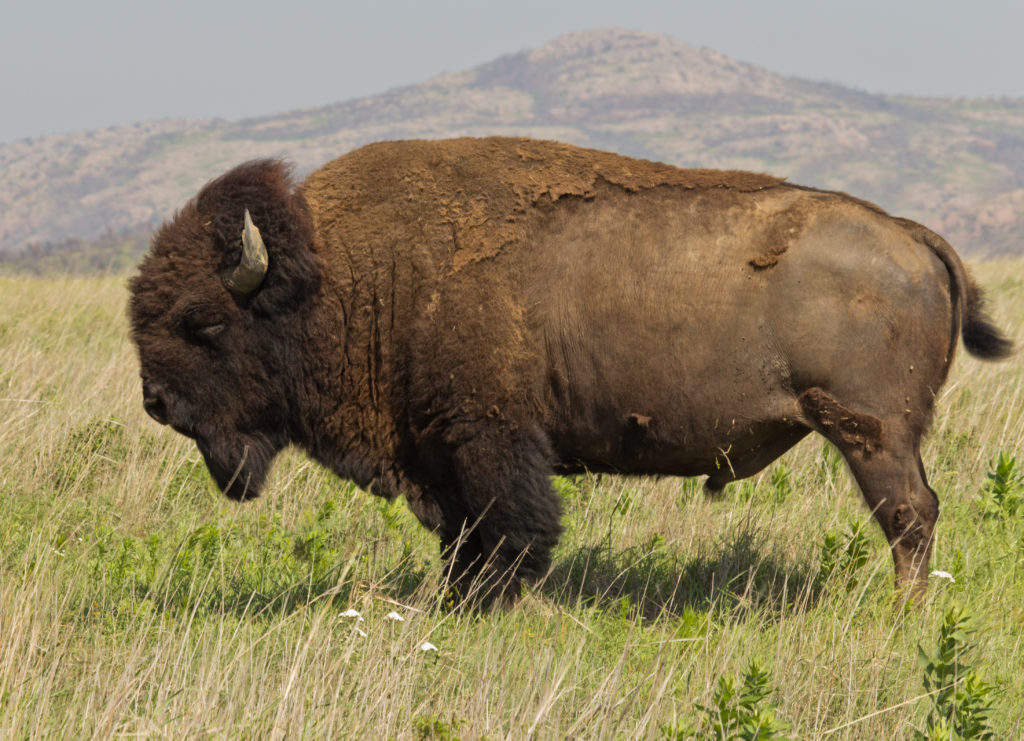
21. The American bison originally came from southern Asia. The bison made their way to America by crossing the ancient land bridge that once connected Asia with North America during the Pliocene Epoch, 400,000 years ago.
22. The ancient bison were much larger than their modern counterparts. Fossil records show that one such bison, Bison latifrons, had horns that were 9 feet long, when measured from tip to tip.
23. Bison have terrible eyesight but an excellent sense of smell and hearing.

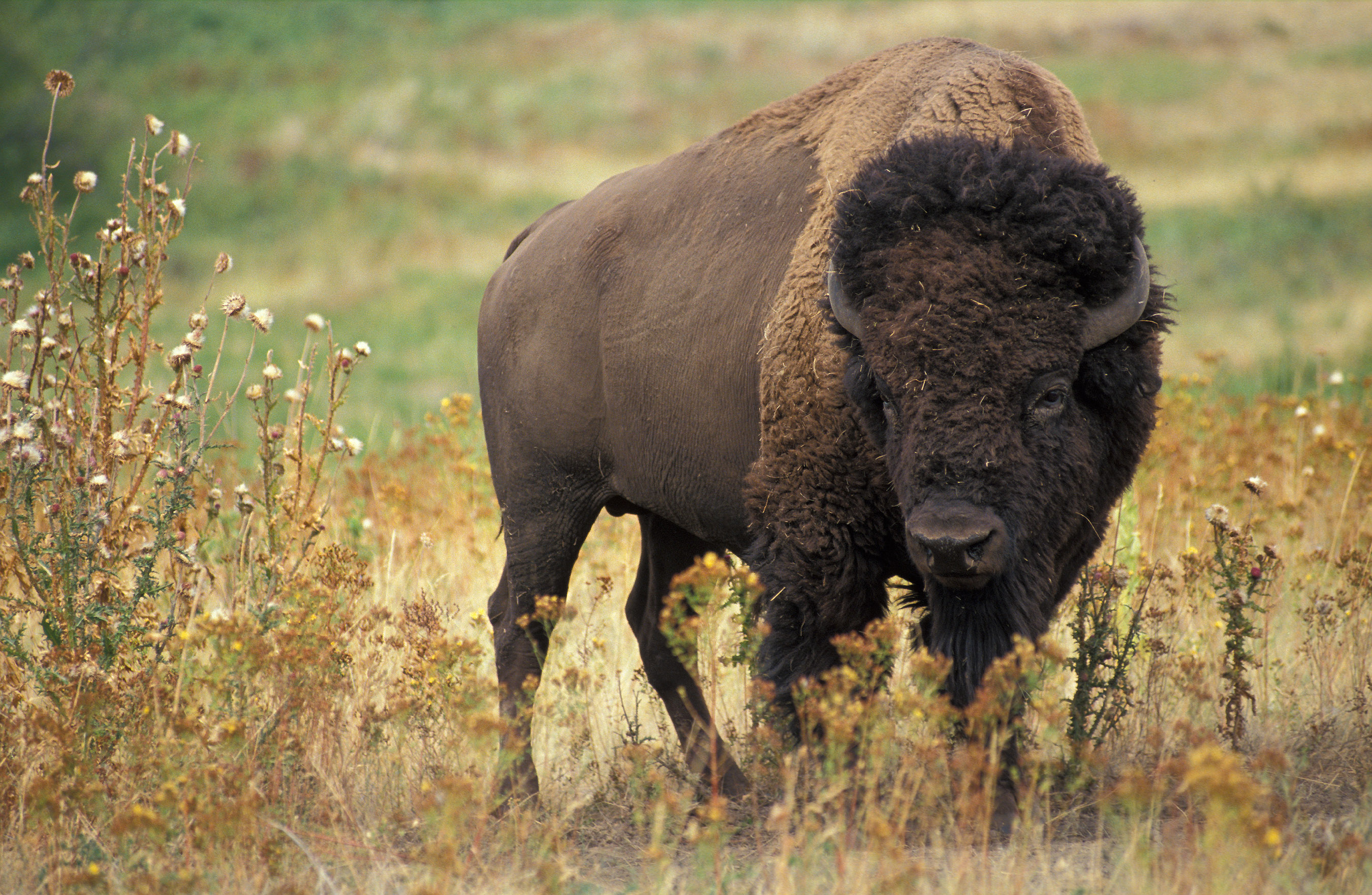
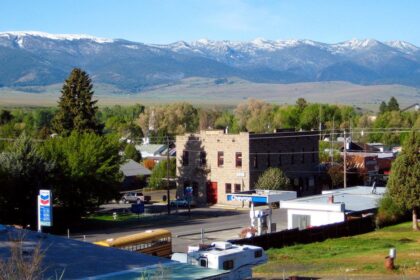
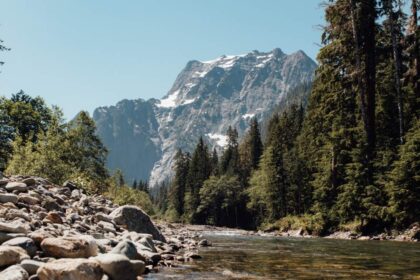

One Comment
Pingback:
February 1, 2018 at 1:16 pm